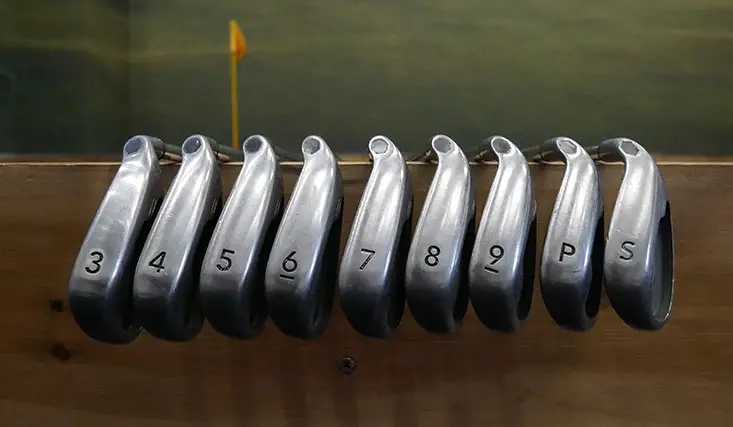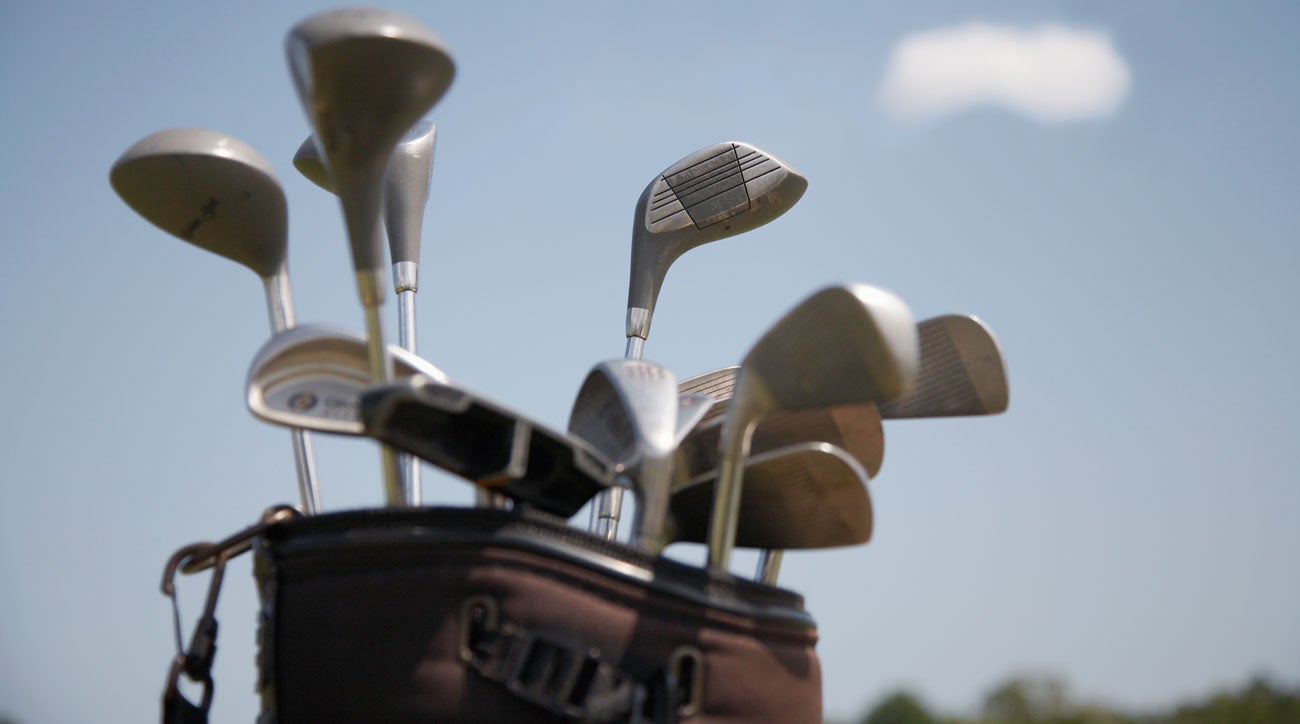How Many Golf Clubs Are There

Golf, a game of precision and skill, relies heavily on the tools of the trade: golf clubs. These carefully crafted instruments, each designed for a specific purpose, have long been the companions of golfers on their quest for excellence on the course. But have you ever wondered just how many golf clubs exist in the world? In this intriguing exploration, we embark on a journey to unravel the mystery surrounding the count of golf clubs globally.
Golf clubs are not just mere sporting equipment; they are the essential tools that golfers rely on to drive, approach, chip, and putt their way through the intricacies of the game. From drivers that launch the ball with power and precision to putters that guide it gently into the hole, each club has its role to play in a golfer’s strategy. The sheer variety of clubs available, ranging from woods to irons, wedges to putters, is a testament to the complexity and depth of the game.
In this article, we delve into the world of golf clubs, seeking to understand the factors that influence their count. We will explore the types of clubs, examine the regional variations in club usage, delve into estimation methodologies, and uncover the challenges inherent in determining the exact number of golf clubs worldwide. So, let’s tee off on this fascinating journey and discover the secrets of golf club counts that lie within the fairways and greens of the golfing world.

Understanding Golf Clubs
Golf clubs are the instruments that golfers use to strike the ball during a game. They are carefully crafted with specific designs and materials to optimize performance. Let’s take a closer look at the various types of golf clubs and their significance in the game.
Types of Golf Clubs
Golf clubs are categorized into several types, each serving a specific purpose and offering unique characteristics. Here are the main types of golf clubs:
- Woods: Woods are designed for long-distance shots. Traditionally made of wood (hence the name), they are now predominantly constructed from metal alloys. The driver, typically a 1-wood, is the club used to tee off on long, open fairways.
- Irons: Irons are versatile clubs used for a variety of shots. Numbered from 1 to 9, irons have different lofts and lengths, allowing golfers to adjust their shots based on distance and trajectory requirements. Lower-numbered irons are used for longer shots, while higher-numbered irons provide more loft and control.
- Wedges: Wedges are specialty clubs designed for shots requiring high trajectory and accuracy. They are used for approaches to the green, bunker shots, and delicate shots around the green. Common types of wedges include pitching wedges, gap wedges, sand wedges, and lob wedges.
- Putters: Putters are the clubs used on the putting green to roll the ball into the hole. They have a flat face and are specifically designed for precision, control, and accuracy on short-distance shots.
Understanding the different types of golf clubs is essential for selecting the appropriate club for each shot, optimizing performance, and achieving desired results on the golf course.
Factors Affecting the Count of Golf Clubs
The total count of golf clubs worldwide is influenced by several factors. These factors contribute to the diversity and availability of golf clubs across different regions. Let’s explore the key factors that impact the count of golf clubs.
Golfing Culture and Participation
The prevalence of golfing culture and the level of participation in the sport significantly affect the count of golf clubs. Regions with a strong golfing culture, such as the United States, United Kingdom, and Australia, tend to have a higher demand for golf clubs. The popularity of golf among the local population, the number of golf courses, and the overall interest in the sport contribute to the availability and variety of golf clubs in these regions.
Golf Course Accessibility and Development
The accessibility and development of golf courses play a crucial role in determining the count of golf clubs. Areas with a high concentration of golf courses attract avid golfers and professional players, resulting in a greater demand for a wide range of golf clubs. The presence of well-designed courses, golf academies, and training facilities further drives the need for diverse golf clubs to cater to varying playing conditions and skill levels.
Equipment Preferences and Trends
The ever-evolving landscape of golf technology and equipment preferences also influences the count of golf clubs. As new technologies, materials, and designs emerge, golfers often gravitate towards the latest innovations to improve their game. For example, the introduction of hybrid clubs, which combine the characteristics of both woods and irons, has led to a shift in club preferences among players seeking versatility and forgiveness in their shots. Additionally, advancements in club customization options, such as adjustable loft and lie angles, allow golfers to fine-tune their clubs to match their swing characteristics and playing style.
Golf club manufacturers continuously strive to meet the demands of golfers by offering a wide range of options tailored to different skill levels and playing preferences. They invest in research and development to create clubs with improved performance, enhanced forgiveness, and optimized ball flight characteristics. These advancements not only influence the count of golf clubs but also shape the overall landscape of the golf equipment industry.
Estimating the Global Count of Golf Clubs
Accurately determining the precise number of golf clubs worldwide is a complex task. However, various methodologies and data sources can provide valuable insights to estimate their count. Let’s explore some key considerations in estimating the global count of golf clubs.
Methodology and Data Sources
Estimating the global count of golf clubs involves a combination of primary and secondary data sources. These may include:
- Golf Club Sales Data: Analyzing sales figures and market data provided by golf club manufacturers offers valuable insights into the number of clubs produced and sold within a given period.
- Golf Association Reports: National and international golf associations often collect data on club registrations, memberships, and participation rates. These reports can provide a general overview of the golf club landscape in different regions.
- Retail Surveys: Surveys conducted among golf retailers and pro shops can offer a glimpse into the variety and volume of golf clubs available in the market.
- Secondary Market Analysis: Consideration of the secondary market, including pre-owned clubs and club trading platforms, provides a more comprehensive understanding of the circulation and availability of golf clubs.
It is important to note that while estimation methodologies can provide valuable insights, the exact count of golf clubs may fluctuate due to factors such as club retirements, wear and tear, and shifts in consumer preferences.
Key Considerations for Estimation
When estimating the global count of golf clubs, it is essential to consider the following factors:
- Manufacturing and Sales Data: Analyzing the production and sales figures provided by golf club manufacturers offers a starting point for estimation. This data provides a snapshot of the number of clubs entering the market.
- Secondary Markets and Pre-Owned Clubs: The circulation of pre-owned golf clubs, trade-ins, and secondary market transactions significantly impacts the count. Many golfers opt for purchasing pre-owned clubs, which adds to the overall number of clubs in use.
- Regional and Country-Specific Factors: Golfing culture, participation rates, and regional preferences influence the count of golf clubs in different areas. Some regions may have higher demand and availability due to a strong golfing culture and accessibility to golf courses.
By considering these factors and analyzing relevant data sources, an estimation can be made to provide a general understanding of the global count of golf clubs.
Analyzing Golf Club Usage by Region
Golf club usage and preferences can vary significantly from one region to another. Let’s examine the trends and characteristics of golf club usage in key regions around the world.
North America
North America, particularly the United States, has a thriving golfing culture and a large number of golf courses. Golf club preferences in this region are diverse, catering to players of all skill levels. The presence of renowned club manufacturers and a strong golf retail market contribute to the availability and variety of golf clubs.
Europe
Europe boasts a rich golfing heritage, with a wide range of golf courses spread across different countries. Golf club usage varies across Europe, influenced by factors such as regional traditions, golfing trends, and player preferences. Countries like the United Kingdom, Scotland, and Ireland have a strong golfing culture, and golf clubs of various types and brands are readily available to cater to the avid golfers in these regions.
Asia-Pacific
The Asia-Pacific region has witnessed significant growth in golfing interest and participation in recent years. Countries such as South Korea, Japan, and China have seen a surge in the development of golf courses and the popularity of the sport. Golf club usage in this region reflects a mix of international brands and local manufacturers, with an emphasis on technology and performance.
Rest of the World
In Latin America, golf is gaining traction as a popular sport, with countries like Mexico, Brazil, and Argentina witnessing the growth of golf courses and an increasing number of golfers. The Middle East, particularly the United Arab Emirates, has established itself as a golfing destination, attracting players from around the world. These regions showcase a growing interest in golf clubs, with a mix of international and regional brands catering to the local golfing community.
Analyzing golf club usage by region provides valuable insights into the popularity of the sport, the availability of clubs, and the preferences of golfers. It further emphasizes the diverse landscape of golf clubs globally.
The Impact of Customization and Club Fitting
Customization and club fitting have become integral components of the golf club landscape, allowing golfers to optimize their equipment to suit their unique swing characteristics and playing style.
Importance of Custom-Fitted Golf Clubs
Custom-fitted golf clubs offer several benefits, including:
- Improved Performance: Customization ensures that the clubs are tailored to a golfer’s physical attributes, swing mechanics, and skill level. This optimization can lead to improved ball striking, accuracy, and consistency.
- Enhanced Comfort and Confidence: Clubs that are properly fitted provide a golfer with a comfortable and confident setup, resulting in more relaxed swings and better overall performance on the course.
Customization Options and Club Manufacturers’ Offerings
Club manufacturers recognize the importance of customization and offer various options to meet golfers’ specific needs. These options include:
- Shaft Selection: Golfers can choose from a range of shaft flexes, weights, and materials to match their swing speeds and preferences.
- Clubhead Adjustability: Many modern golf clubs feature adjustable hosels, allowing golfers to modify loft, lie angle, and face angle to fine-tune their shots.
- Grip Customization: Golfers can select grips of different sizes, materials, and textures to optimize feel and control.
By embracing customization and club fitting, golfers can unlock the full potential of their equipment and enhance their overall golfing experience.
Challenges in Counting Golf Clubs
Counting the exact number of golf clubs globally poses certain challenges due to various factors.
Lack of Centralized Data and Industry Transparency
The golf industry lacks a centralized database or repository that captures comprehensive information on golf club counts. Manufacturers, retailers, and secondary market platforms may not openly disclose their sales figures or inventory details, making it difficult to obtain a precise count.
Regional Discrepancies and Niche Markets
Golf club counts can vary significantly across regions due to varying levels of golfing participation, infrastructure, and cultural preferences. Niche markets, such as collectors of vintage clubs or specialized clubs for specific playing conditions, further add complexity to the overall count.
Changing Equipment Preferences and Innovation
The golf equipment landscape is dynamic, with constant innovations, introductions of new club models, and evolving consumer preferences. As golfers adopt newer clubs, retire older ones, or trade them in the secondary market, the count of golf clubs fluctuates.
Considering these challenges, it is important to approach the estimation of golf club counts as a general approximation, guided by the available data and industry trends. While an exact count may be elusive, the focus should be on understanding the broader landscape of golf club availability and usage.
Conclusion
In conclusion, the count of golf clubs worldwide is a complex and dynamic topic influenced by factors such as golfing culture, course accessibility, equipment preferences, customization options, and regional trends. While an exact number is challenging to determine, estimation methodologies, data sources, and regional analysis provide valuable insights into the global golf club landscape.
Understanding the types of golf clubs, their significance in the game, and the factors affecting their count allows golfers and enthusiasts to appreciate the diversity and range of equipment available. Analyzing golf club usage by region highlights the global reach of the sport and the varying preferences of golfers worldwide.
The customization and club fitting aspect enhances the golfing experience, enabling golfers to optimize their equipment for improved performance and enjoyment on the course. However, challenges in counting golf clubs arise from the lack of centralized data, regional discrepancies, and the ever-evolving nature of the golf industry.
In the end, the count of golf clubs serves as a reflection of the passion and dedication of golfers worldwide. As the game continues to evolve and technology advances, the world of golf clubs will undoubtedly see further innovation, bringing new opportunities and challenges. So, grab your favorite golf club, step onto the course, and embrace the journey of this timeless game.





